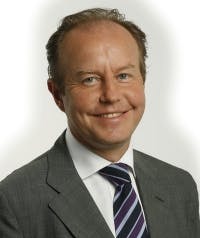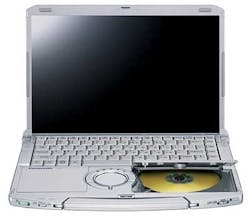Recovering Japan's Water Empire
Normally known for high quality, consistent supply, Japan's water industry came under fire earlier this year after the devastating tsunami brought a nuclear power plant to its knees, circulating scares of nuclear contamination. Tom Freyberg met Mr Yoshihiko Misono, the chief executive of the Japan Water Works Association (JWWA), to discuss the country's latest situation.
On March 11 this year, a devastating 8.9 magnitude earthquake struck the east coast of Japan, bringing part of one of the world's largest economies to its knees. One of the biggest earthquakes to be recorded worldwide, the seismic force was even felt as far away as the United States. Groundwater levels in Texas and Virginia fluctuated wildly two hours after the earthquake was first reported.
In an earthquake prone region, Japan had become resilient to a series of smaller events throughout its history. But it was the scale of the resulting tsunami which many east coast civilians did not expect. Measuring nearly 10 metres in height, the giant wave struck the country with full force. Although the number of fatalities increasingly grew, it was the failing Fukushima Daiichi nuclear plant which grabbed headlines around the world.
With any natural disaster, the supply of fresh water afterwards is a necessity. In this case, what made matters worse were circulating scares over nuclear contamination to groundwater from pollution levels. Days later, however, and these fears were soon put to rest. Findings from the Kanamichi Purification Plant, which supplies water to Tokyo, clarified that water levels were infact safe.
Less than three months on and Yoshihiko Misono, executive director from the Japan Water Works Association (JWWA), is in Washington, DC, delivering the keynote address at the ACE11 event.
Misono highlights the devastating impact of the earthquake but demonstrated the pro-active and efficient services of the water industry. Immediately after the earthquake, there were 1.6 million homes without access to drinking water. This number was halved within a mere 10 days. He says that this number is now down to 59,000.
During the immediate aftermath, a total of 430 vehicles were dispatched from utilities every day to provide drinking water. And, at community sites where water was handed out, Japanese populations were orderly, polite and calm. There were no riots or looting in sight. A cultural lesson to be learned, and admired, worldwide. To find out more about the country's rehabilitation efforts and water monitoring progress, following the period of radiation scares, WWi caught up with Mr Misono in Washington.
WWi: First of all, my sympathy goes out to the victims and survivors of the earthquake. Following the earthquake there were warnings of radioactive iodine in the water supply. What is being done to continually monitor these levels and improve public faith back into drinking water supplies?
Yoshihiko Misono (YM): It's not just water that is being monitored, everything throughout the society has had to be monitored because of the radiation levels. They're measuring everything daily and they are releasing the results to the public. One of the problems is that even though the International Atomic Energy Agency is in charge of the standards, there are really no standards for knowing what's harmful to people from the radiation. There are no standards for what is the damaging radiation level for humans. We have standards for what can be released but we don't have a rationalisation of those standards for the human population.
WWi: At the time reports showed that tap water in downtown Tokyo was measuring 210 becquerels of radioactive iodine per kilogram (the acceptable level for infants under the age of one is 100 becquerels and adults 300). Has this all been cleared up now and drinking water is safe to drink across the whole of Japan?
YM: The Ministry of Health, Labour and Welfare have the standards but they don't have any rationalisation behind those standards. These haven't been reassessed but they don't have the rationalisation behind them. Now they have cleared all of the standards (100 becquerels for infants and 300 for adults). This is now at undetectable levels.
WWi: You mentioned in your presentation the use of earthquake proof materials, essentially piping made with flexible jointing. Following the tsunami, can you tell us about the rehabilitation programme to replace all existing infrastructure that's not earthquake proof?
YM: So in the area where there was an earthquake, the damage was fairly light - it wasn't bad so there wasn't a huge amount of work required. The two worst things and two biggest disasters were the nuclear disaster and the tsunami - for the earthquake itself, while we had preparations in place, we really didn't predict it to be so bad. There was about 30 minutes between the earthquake and the warning for the tsunami, so most people were able to get away but some people were still there. In that area there have been very large tsunamis in the past, but there have also been a lot of small ones. This time a lot of people, even though they had the tsunami warning, thought that it would be a small one and they didn't leave because of this reason.
WWi: And what about help from the international water sector, aid agencies, other associations and technology providers. How much did these organisations help out?
YM: We received moral support and a lot of messages from overseas. We received money and financial support but technical support was not received for water. This is because the Japanese, since it's an earthquake prone country, have a lot of technologies which are manufactured at a high level for earthquake response. We did however receive a lot of support for the nuclear disaster, from America and France, infact all over the world. So we did receive technical support in those areas, but not so much on the technical water side.
WWi: The JWWA is here in Washington for the American Water Works Association (AWWA) event. What sort of international partnerships can we expect to see between Japan and North America, and elsewhere going forward?
YM: AWWA has 130 years of history and the JWWA has 120 years of history, so there has been a lot of exchange. Japan has always wanted to learn from American technology.
WWI: There are a lot of similarities between the two countries and their water industries, with both enjoying a high water supply rate. In America a lot of infrastructure was built following the Second World War and now it's time to refurbish and implement new technologies.
YM: Japan learned from Europe and the United States but now the Japanese industry itself is at an extremely high level; through their own unique technologies. The world has a rising need for water and the world as a whole is suffering from a shortage of water. So as a collaboration between the AWWA and JWWA, we want to work on solving the problem of dangers to water supplies worldwide, as a global issue.
What's important in that collaboration is getting people together to exchange information and encourage human interaction. In order to foster new people, we want to promote exchanges of information on the staff levels to help bring new people into the industry.
WWi: We are seeing a trend now with Asian companies progressing and exporting their technologies and services Westward, such as Hyflux and Doosan in Northern Africa and Middle East, respectively.
YM: Singapore and Korea have been supplementing their technology and working to raise levels but if you look at it from a Japanese standpoint, it's not at that level, it's not as high. The reason the Japanese seem to be behind in exporting expertise out of the country is because the area where they excel is with components, such as valves and membranes. So with management companies from France, such as Veolia and Suez, they have the expertise in management and overseeing but there are not many of those types of companies in Japan.
If we compare Singapore and Japan, we have 1400 water utilities, with very diverse backgrounds. In Singapore, they only have one. So we have a lot of experience and the background in this industry. In terms of management, we are very behind. The quality of what they are doing in Singapore and Korea is very good.
WWi: So going forward the ideal partnership will be combing the management experience of companies such as Veolia and Suez with technical, technology expertise of Japan's water sector?
YM: Yes, exactly.
WWi: Do you have any final messages you would like to send out to the international water sector?
YM: It's very clear that water is going to become the next oil. So it's very important that on an industry level, information is shared to help developing countries. We want to set up a win-win situation with the developing countries. The year of 2015 will see a target date for the Millennium Development Goals (MDGs).
If we look at populations across Asia, we still have one billion people without access to safe water. So, under this basis, we will try to extend our hands based on the municipality basis or the utility basis, through to water operators as well. This is not for business, but supplying water as a necessity. So we can help to improve the water situation for the world in a partnership like the AWWA has with American companies. The JWWA can achieve this with Japanese companies. And it is through such partnerships where improvements can be created.
More Water & WasteWater International Current Issue Articles
More Water & WasteWater International Archives Issue Articles



